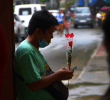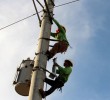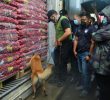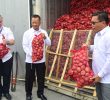DAVAO CITY — Is a light rail transit (LRT) possible in Davao?
The city government thinks this could happen, as Mayor Rodrigo Duterte entered a deal with the Korean Engineering and Construction (KEC) to conduct a joint study and construction of this project.
The joint project would be launched by September while the feasibility study may be completed by early 2015.
Duterte said the LRT is a viable option for the city as he foresees problems in traffic congestion such as the rise in population, vehicles and businesses.
“Right now, we have narrow roads that we can’t expand because we can’t buy the expensive lands (to expand the highway); our only option is to have railways,” he told the delegation of the KEC after the signing.
His point was supported by the study presented by KEC overseas manager Dae Kwon Jung, which showed Davao City’s population growth rate is at 2.7% annually and vehicles rising in Davao Region at 7.1% annually.
The city’s main form of transportation comprises of multicabs, jeepneys, tricycles, buses and taxis.
Jung said Davao City’s population may even reach 10 million by the year 2040, and at that time the city may be considered “one of the terribly trafficked cities” if no sound transport system is created.
The project is a first in the Philippines for the private construction firm KEC. But its chief researcher, Chae Il Kwon, said the company’s credentials include the construction of the high-speed train projects in Korea, Singapore and Malaysia, and other railway projects in Seoul.
Jung presented four possible types of mass transit and four possible routes for this project.
The company said the most economic route would be a 13 kilometer route plying Ateneo de Davao University in Roxas Street, Abreeza Mall in Davao, SM Mall Lanang, DIHO and the Davao International Airport in Buhangin.
The three other routes will go through these same areas with additional areas.
Jung proposed that the monorail type of LRT, with a capacity to carry five to twenty-thousand passengers in an hour running at 70 kilometers per hour, to be used for Davao City.
He added that monorail train contributes less noise pollution and carbon emissions, factors that the Duterte considers as a “nature saver”.
Duterte said he favors this over another proposal from the city council’s transport committee for a public bus transit system in the city.
“You will only have one engine running over the city. Can you imagine if you have many buses spewing more carbon emission that contributes to pollution,” he said.
The mayor said the LRT is a long-term project that may be completed in the next decade, but he wants the feasibility to take place not later than early 2015 as the country will be heading towards the national election.
Duterte said he will consult with various sectors such as business leaders and most especially public transport leaders representing 8,500 jeepney drivers and 14,000 tricycle drivers whom he sees would resist the city’s plans.
“It will be difficult, but that’s my task to make sure transportation of goods and services have to go fast. We have to move with the times; but we’ll find something for them,” he said.
Duterte said funding for this project will come from the World Bank, but said he has to confer on what is the actual cost of the project.
Kwon told reporters that the cost for the feasibility study will be around US $ 1-million and mentioned that the Korean government will shoulder part of the project.
The mayor said he will also send two engineers or technical persons to Korea for the launch in September to help thresh out details on the project.(davaotoday.com)










